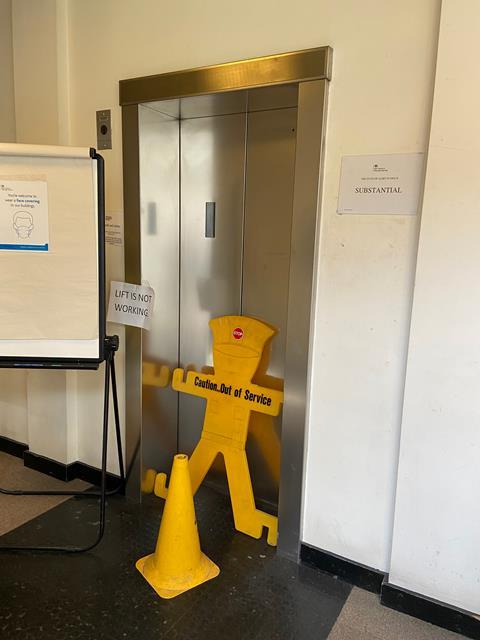A lack of accessibility in magistrate court buildings in England and Wales has led to resignations, a report by the Magistrates' Association has revealed.
Only a quarter of court buildings out of the 57 surveyed were found to be ‘good’, meaning they complied with the ‘most minimum accessibility standards’, and only one court achieved this across all building areas.
In the 34-page report, the national charity says 'courts and some magistrates are being underused' thanks to an ‘exclusionary environment’.
It adds: ‘By failing to ensure all court buildings are accessible, the court estate is undermining the efficient administration of justice. The damage to magistrates’ morale resulting from poor accessibility features and restrictions on where they can sit has led to resignations.’
More than two thirds (68%) of the courts surveyed were found to have either no accessible toilet or accessible toilets that failed to comply with access standards, have limited room to manoeuvre a wheelchair or were ‘clearly used’ for storage.
Only a third had a toilet cubicle with rails fitted and the report found the ‘most extreme example’ of poorly planned and executed accessible toilets where a wheelchair user risked falling down a flight of stairs due to an inappropriately positioned accessible toilet.

In public areas, 81% of the courts surveyed had toilets that complied with best practice which includes appropriate emergency cords, contrast colour grab rails and sufficient space for wheelchair users to turn.
The report also found that though 74% of courtrooms have a hearing loop or other hearing assistant device available, more than a fifth could not confirm whether the hearing loop was working.
One respondent told the court they had asked for a hearing loop to be repaired in two courts but ‘it’s been three years and no repairs have taken place’. They added: ‘I almost resigned due to frustration’.
Disabled magistrates in almost a fifth (17%) of the courts surveyed have to use the public entrance due to a lack of an accessible judicial entrance and 51% do not have level or ramp access to all areas for magistrates.
The report states: ‘The court estate is insufficiently accessible and disabled magistrates’ access to courts has been neglected. It is disturbing that, while advocating for a more diverse judiciary, His Majesty’s Courts and Tribunals Service (HMCTS) and the Ministry of Justice are failing to make provision for disability in many court buildings. This is affecting magistrates, practitioners and members of the public alike.'
Chair of the association’s magistrates with disabilities network David Rose said: ‘This report is a significant step forward in being transparent about accessibility and sets out a strong case for improvements for disabled magistrates and the wider court-user community.’
The report recommends investment, embedding accessibility in policy and practice, communicating with disabled magistrates and transparency over current issues.
This article is now closed for comment.


























7 Readers' comments